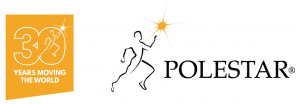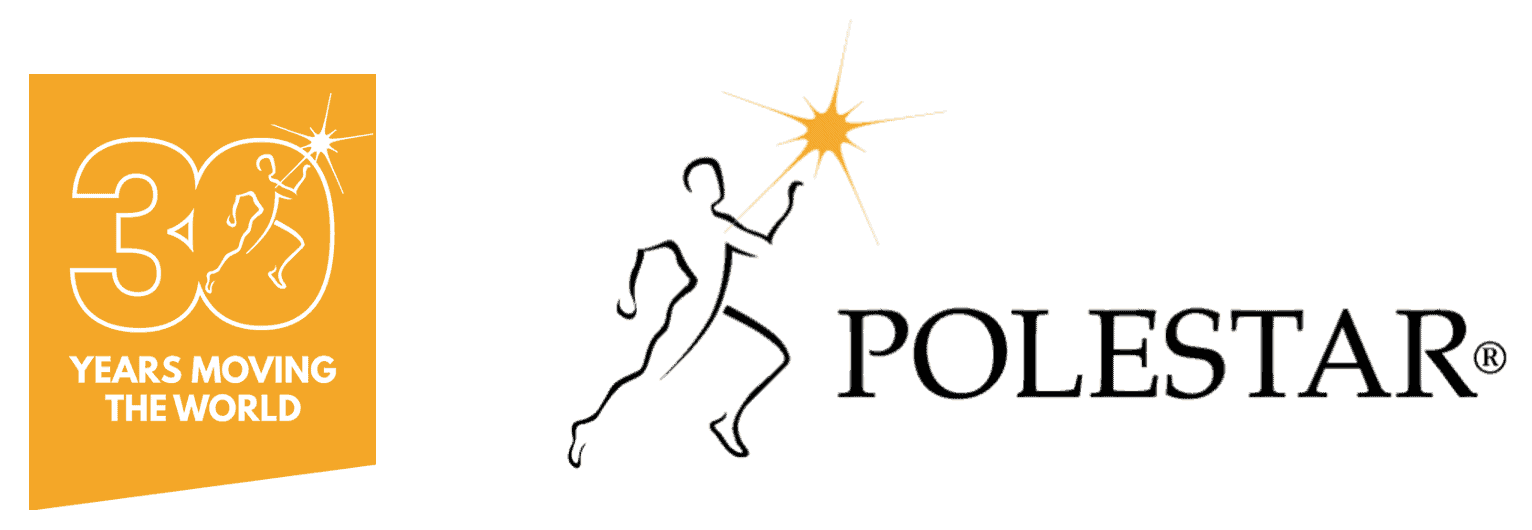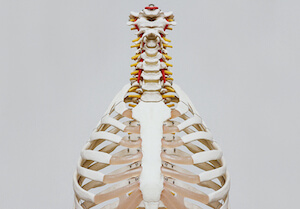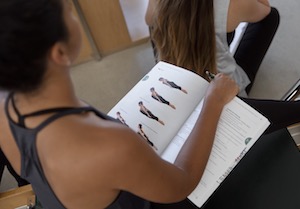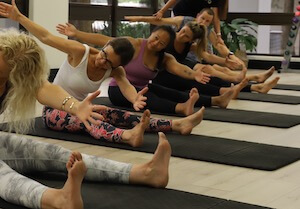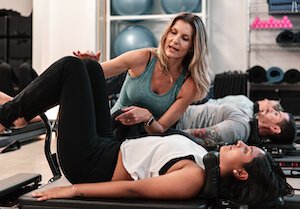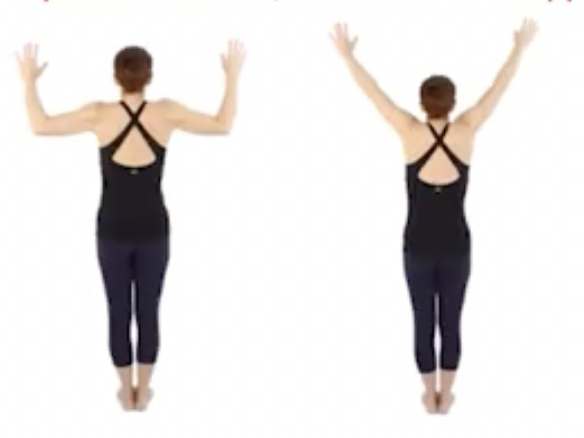Contraindications: Examples of Pilates Exercises to Avoid
What are Contraindications, and why do they matter?
In simple terms, a contraindication is a reason not to proceed with a particular treatment or exercise. It signifies that the potential harm outweighs any possible benefit. For Pilates teachers, contraindications are paramount because you’re working closely with clients’ bodies and health. Ignoring these warning signs could lead to injury, pain, or the worsening of existing conditions.
Think of it this way: you wouldn’t prescribe peanuts to someone with a peanut allergy, would you? Similarly, you shouldn’t prescribe certain Pilates exercises to individuals with specific health concerns. Recognising and respecting contraindications demonstrates professionalism, protects your clients, and safeguards your reputation.
Specific examples of exercises to avoid and their risks
Not all Pilates exercises are created equal. Some pose a higher risk for certain individuals due to their specific conditions. Here’s a breakdown of exercises to approach with caution:
- Spinal Flexion Exercises (Roll-Ups, Roll-Overs, and the Hundred): Exercises that involve bending the spine forward can be problematic for several reasons.
- Low Bone Density/Osteoporosis: Spinal flexion can increase the risk of compression fractures in individuals with weakened bones. The pressure on the vertebrae can be too much for them to handle.
- Lumbar Fusions: After a lumbar fusion, the fused segments have no mobility. Repeated flexion can put extra stress on the segments above and below the fusion, potentially leading to further injury.
- Disc Herniations: While not always a contraindication, spinal flexion can sometimes exacerbate disc herniations by pushing the disc material further out.
- Deep Neck Flexion: During some exercises, like the Hundred, deep neck flexion is expected. Certain clients may find this uncomfortable or even experience pain.
- Tendon Stretch: Due to the spine flexion, internal pressure, and possible nerve stretching this exercise might be unsafe for those with low bone density, neural tension, or osteoporosis.
- Jumping Exercises:
- Osteoporosis: The high-impact nature of jumping can be dangerous for people with osteoporosis. The force can lead to fractures.
- End-Range Stretching:
- While some clients may enjoy end-range stretching, it is not for everyone. Proceed with caution and be aware of what the client is feeling.
It’s crucial to remember that these are just a few examples. Each client is unique, and a thorough assessment is essential to identify any potential contraindications.
Beyond the Exercise: considering individual conditions
Understanding contraindications goes beyond simply memorising a list of exercises to avoid. It involves developing a keen awareness of your client’s individual conditions, limitations, and pain responses. Here are some additional factors to consider:
- Ehlers-Danlos Syndrome (EDS) and Hypermobility: While Pilates can be beneficial for some with EDS, it’s not a one-size-fits-all solution. Be cautious with hypermobile clients. Hypermobility can sometimes mask underlying joint instability or even osteoarthritis.
- Pregnancy: Pregnancy requires modifications to many Pilates exercises, especially as it progresses. Certain positions may become uncomfortable or unsafe.
- Chronic Pain: Approach clients with chronic low back pain with sensitivity. Avoid promising a “magic exercise” or “cure”. Focus on understanding their individual pain experience and addressing their specific needs.
- Scoliosis: With scoliosis, it is important to understand that there are guidelines for instructors, which can help create a safe fitness exercise program.
Practical Tools and Techniques for identifying and managing contraindications
So, how can you, as a Pilates teacher, effectively identify and manage contraindications in your practice?
Polestar Pilates recommends several practical tools for identifying and managing contraindications, focusing on assessment, movement principles, and collaborative care.
Practical tools recommended by Polestar:
- Polestar Assessment Tool (PAT) and Screening: This tool helps assess a client’s movement capabilities and limitations. It helps identify areas of functional movement that are limited and informs exercise prescription. The assessment considers factors like alignment, mobility, control, and integration of movement. It has evolved from the Polestar screening tool, which was started by Lisa Staltz, well-known for her work related to spinal conditions and deformities such as scoliosis.
- Understanding of Movement Principles: Polestar emphasises principles like alignment, breath, mobility, control, and movement integration. These principles guide the selection and modification of exercises to ensure safety and effectiveness.
- Screening for Red Flags: Recognise situations that require referral to other healthcare professionals. This includes severe pain, unusual movement patterns, or any signs that suggest an underlying medical condition.
- Client History and Interview: Gathering detailed information about a client’s history, including any pre-existing conditions, injuries, and pain experiences. Understanding their goals and activities helps tailor the program appropriately.
- Functional Testing: Polestar uses functional tests to assess how clients perform activities related to their goals. This helps identify limitations and design exercises to improve their ability to perform those activities safely. For example, the “goal post” test can be used to assess shoulder function. Tools such as imagery and props, including the OOV, Balance Sit, and Aligner, may also help with assessment and modification.
- Collaboration and Communication: Polestar emphasises the importance of communication among practitioners, and of a client-centred approach.
- When practitioners communicate effectively, they can provide a more holistic and effective treatment plan for their clients.
- Remember that Polestar is a client-centric methodology, versus a method-centric repertoire.
- Awareness of Pathologies & Risk Factors: Being educated about pathologies such as scoliosis and understanding the risks of different scoliosis types is important in being able to assess a client and prescribe a safe exercise program. Risk assessment should also include an evaluation of how good a mover the client is. Be aware also of conditions like hypermobility, Ehlers-Danlos Syndrome (EDS), and osteoporosis and consider appropriate exercise modifications.
When applying these tools, Polestar also recommends:
- Prioritising Mobility: Polestar emphasises that, unless there is mobility, there is not really stability.
- Using Neutral Language: Using neutral language can help avoid biasing a client’s experience before they have even had it.
- Adapting Exercises: Modifying exercises to accommodate individual needs and limitations. This may involve changing the load, spring settings, or body orientation. Remember that it is important to treat each individual, and not just the pathology.
- Focusing on Proprioception and Awareness: Encouraging clients to develop body awareness and internal feedback mechanisms. This helps them recognise when a movement feels unsafe or is causing pain.
- Considering Bone Health: Recognising the importance of bone health and adapting exercises accordingly. This includes promoting weight-bearing and strengthening exercises while avoiding spinal flexion in individuals with osteoporosis.
- Adapting to Different Populations: Being aware of the specific precautions and considerations for diverse populations, such as those with hypermobility syndromes.
- Education and Training Polestar emphasises the importance of staying up-to date with the latest research and best practices in Pilates and related fields. It is important to understand – for example – “science-based pathology”.
A Final Thought: Prioritising safety and well-being
As a Pilates teacher, your primary responsibility is to ensure the safety and well-being of your clients. By understanding and respecting contraindications, you create a safe and supportive environment where individuals can experience the transformative benefits of Pilates without risking their health.
